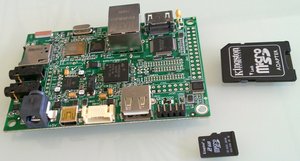 For multiple years, Bootlin has provided two typical training courses for embedded Linux developers: an Embedded Linux system development course that focuses on the basics for embedded Linux development (bootloader and kernel configuration, compiling and usage, system integration and build systems, cross-compiling, filesystems, application development and debugging, etc.) and an embedded Linux kernel and driver development course that focuses on kernel and driver development (kernel APIs for drivers, character drivers, device model, power management, kernel porting, etc.). In total, we have given dozens of editions of these sessions in multiple locations all around the world. We have kept our commitment to release all the training materials under a free license (the Creative Commons CC-BY-SA license), and they are therefore freely accessible for anyone at /docs/.
For multiple years, Bootlin has provided two typical training courses for embedded Linux developers: an Embedded Linux system development course that focuses on the basics for embedded Linux development (bootloader and kernel configuration, compiling and usage, system integration and build systems, cross-compiling, filesystems, application development and debugging, etc.) and an embedded Linux kernel and driver development course that focuses on kernel and driver development (kernel APIs for drivers, character drivers, device model, power management, kernel porting, etc.). In total, we have given dozens of editions of these sessions in multiple locations all around the world. We have kept our commitment to release all the training materials under a free license (the Creative Commons CC-BY-SA license), and they are therefore freely accessible for anyone at /docs/.
We are now announcing a new course, called Android System Development. It is a four day training session that targets engineers who need to develop embedded systems with Google Android.
Through theory and practical labs, the course makes you familiar with compiling and booting Android, with adapting Android to support a new embedded board (assuming that it is already supported by the Linux kernel), and with building a real system through accessing specific hardware, customizing the filesystem and using debugging techniques. See the complete agenda. The training materials for this session will also be made available under the same Creative Commons CC-BY-SA license.
If you are interested in this training session, you can:
- Join the public session organized in Toulouse, France, on June 11-14, 2012.
- Order an on-site training session to be held at your location. See registration details.
This training course will be given by our engineer Maxime Ripard who has gained Android experience by working at Archos on Android tablets, by making Android work on multiple TI OMAP3 based platforms and also by participating to the Android Builders Summit conference.
Do not hesitate to contact us for further details about this new training course.


 Looking for kernel and embedded Linux experts
Looking for kernel and embedded Linux experts
 .
.